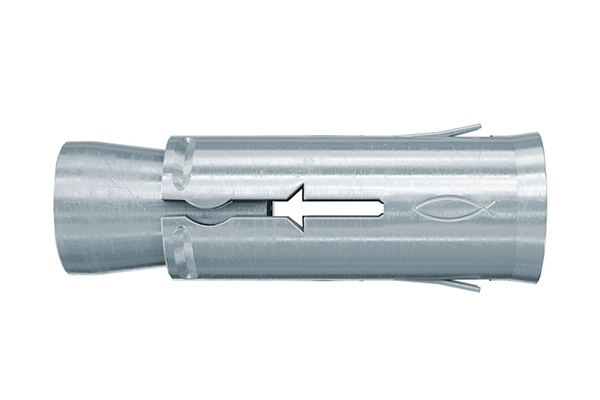Installing objects on a ceiling may seem like a challenge, especially when the ceiling is made of materials that aren’t solid wood or concrete. Whether you want to hang light fixtures, plants, or shelves, securing the item safely and firmly is essential. In such cases, hollow ceiling anchors offer an effective solution for anchoring items to ceilings that may not be as solid as walls. This article explains how hollow ceiling anchors work, the types available, and when it’s appropriate to use them.
Understanding Hollow Ceiling Anchors
Hollow ceiling anchors are specialized fasteners designed to provide support for objects installed in ceilings made from materials like drywall, plaster, or other lightweight constructions. These anchors are engineered to expand or lock into place, ensuring that the weight of the object is distributed evenly and securely. While regular screws may simply slip out of hollow materials, hollow ceiling anchors create a firm grip, making it possible to support reasonably heavy items.
Types of Hollow Ceiling Anchors
- Toggle Bolts: Toggle bolts are among the most common types of hollow anchors used for ceilings. They consist of a bolt and a set of spring-loaded wings that expand once they’re inserted through a hole in the ceiling. As the bolt is tightened, the wings spread out, locking into place and providing strong support. Toggle bolts are ideal for heavier items, as they can typically hold significant weight.
- Molly Bolts: Molly bolts are hollow anchors that expand as they are tightened. The installation process begins with a pre-drilled hole, after which the anchor is inserted. As the screw is turned, the metal casing of the molly bolt expands and locks against the ceiling’s interior, distributing the load. Molly bolts are particularly effective for medium-weight items.
- Plastic Expansion Anchors: For lightweight items, plastic expansion anchors are a simple and affordable option. These anchors expand when a screw is inserted, creating a grip in the ceiling material. While not as strong as the toggle or molly bolts, they’re suitable for hanging lighter items such as small decorations.
- Threaded Anchors: Also known as self-drilling anchors, threaded anchors are convenient because they don’t require pre-drilling. They have a sharp, threaded tip that can be screwed directly into drywall. These anchors are ideal for light- to medium-weight items but may not provide the durability or strength required for heavier objects.
When to Use Hollow Ceiling Anchors
Weight Considerations: The first factor to consider when choosing a hollow ceiling anchor is the weight of the item you intend to hang. Toggle bolts are suitable for heavy objects like chandeliers, ceiling fans, or heavy plants, as they provide the most secure hold. For lighter items like small lighting fixtures, decorations, or lightweight shelving, plastic expansion anchors or molly bolts may suffice.
Ceiling Material: Knowing the type of ceiling material is crucial. Hollow ceiling anchors are specifically designed for hollow or brittle materials, such as drywall or plaster. They are less effective in materials like concrete or solid wood, which require different types of fasteners.
Location and Accessibility: The accessibility of the ceiling and the ability to drill holes or tighten bolts are also factors. For ceilings where access is limited, such as high ceilings, self-drilling anchors can be helpful because they eliminate the need for pre-drilling.
Tips for Installing Hollow Ceiling Anchors
- Check Weight Limits: Each anchor type has a specific weight limit, so always verify that the anchor you choose can support the weight of the item you’re hanging.
- Drill Accurate Holes: If you’re using toggle bolts or molly bolts, drilling a hole of the correct diameter is essential. Too small a hole may damage the anchor, while a hole that’s too large can lead to a loose fit.
- Use Multiple Anchors for Heavy Loads: For items that exceed the weight limit of a single anchor, use multiple anchors to distribute the weight evenly across several points.
- Avoid Over-Tightening: Over-tightening can compromise the integrity of the anchor, especially in fragile materials like plaster or drywall. Tighten only to the point where the anchor feels secure.
Advantages and Limitations of Hollow Ceiling Anchors
Advantages: Hollow ceiling anchors are ideal for ceilings that can’t support the use of standard screws and bolts, allowing people to safely hang items in a variety of spaces. They are also relatively easy to install, especially with modern self-drilling models, and can support a range of weights, depending on the type.
Limitations: However, hollow ceiling anchors do have limitations. They are best suited for medium to lightweight items in hollow ceilings. For extremely heavy objects, locating ceiling joists or solid structural points is a safer option, as hollow anchors alone may not provide the stability required for prolonged support.
Conclusion
Hollow ceiling anchors offer a versatile and reliable option for securing items in ceilings made from drywall or other hollow materials. By selecting the appropriate type of anchor, considering weight limits, and following correct installation practices, you can safely and securely hang a variety of items. Whether you’re installing a decorative light fixture or a practical storage solution, hollow ceiling anchors can help you achieve a stable and durable installation.
Post time: Oct-30-2024















